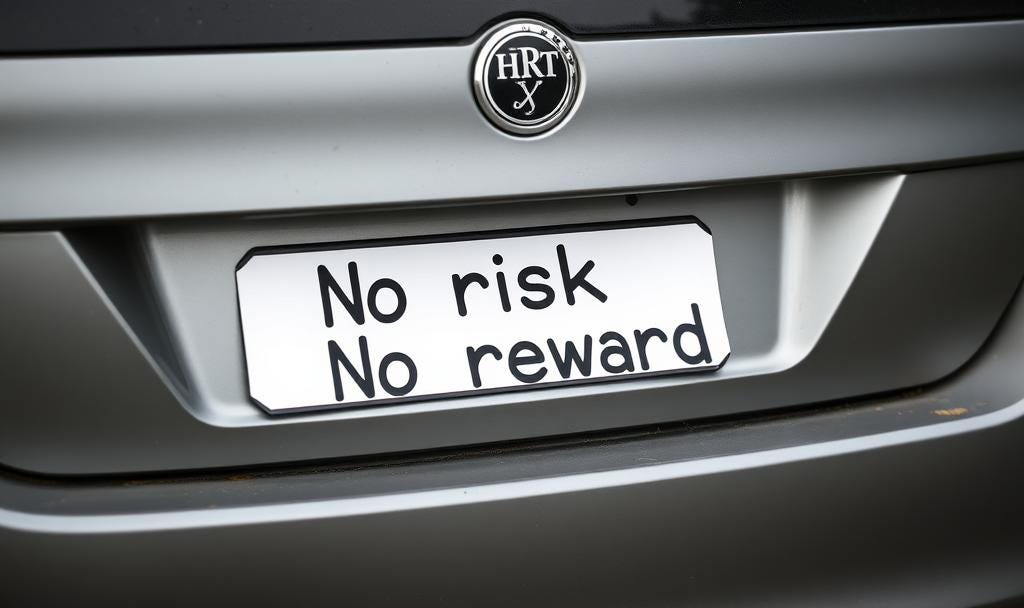How To Break Through BS Wealth Advice
Bumper Sticker Wisdom Is Fun But Distracts You from Becoming a Savvy Wealth Builder
I hate to admit it, but I think bumper stickers are funny, and I try to read them at stop lights and in parking lots all the time. With all my bumper sticker reading, I might need this one:
“I'm not tailgating, I’m drafting for fuel efficiency.”
(Ok, I don’t really do that…)
Here’s a financial one I found via ChatGPT:
“Spent my 401(k) on this bumper sticker.”
or
“I do my own stunts… like living paycheck to paycheck.”
But why are bumper stickers funny? I think because they’re witty, snarky, and poking fun with exaggeration, hyperbole, puns, and more but often with a kernel of truth. Usually the real truth requires disregarding the full picture, essential pieces, or the nuance. Otherwise, it wouldn’t fit on a bumper sticker.
But most important, it wouldn’t be funny and easy to remember and repeat!
Bumper Sticker Wisdom for Wealth Building
Bumper Sticker Wisdom is easy to remember, easy to repeat, and sounds like wisdom.
It takes money to make money
No risk, no reward
I owe, I owe, it’s off to work I go!
Money doesn’t grow on trees
Invest for the long haul
Save for a rainy day
The rich get richer
Don’t count your chickens before they’ve hatched
The grass is always greener on the other side of the fence
When in doubt, throw it out
Of course, there are many more.
The problem is not that they’re all (partially) wrong. And it’s not that the true parts are half truths. The real problem is when I let them stand as wisdom. I hear it, I repeat it, and I move on. I just refreshed a belief about money that’s not totally wrong but not quite right. I’ve stopped thinking, but this wisdom absorbs into my financial belief system, subconsciously guiding my perspective and decisions about money.
Instead of Accepting Bumper Sticker Wisdom, Use It to Advance Real Wisdom
Bumper stickers trigger my curiosity.
What point did it try to make?
What part of it could be true? When and how?
What part do I believe is not true, or not always true?
What could be the motivations of the person speaking the message?
What part am I uncertain about?
I do this with every bumper sticker I read… No, I don’t! I look at ideas that relate to my goals and values. I’m constantly adding to and subtracting from what I think I know. I’m integrating what I discover with other ideas. I create and deepen discoveries by turning them around in my head, generating still other ideas to explore. But I do this for stuff that matters to me, not every bumper sticker.
Analyzing “No Risk, No Reward”
I hear “No risk, no reward” all the time in financial media, from experts, from advisers, and from friends. This matters to me because both risk and reward affect the progress toward my wealth goals. Let’s be curious about it. I won’t go through all the questions in this post because that would be too long, but I’ll give a sample of how I would start.
What point does it try to make?
The bumper sticker claim is that there can be no reward without taking risk. Here’s where my mind goes:
Does it mean I can’t get any reward unless I take some risk?
Does it mean I have to take a large risk to get a large reward?
Could I take a small risk and get a large reward?
How do I avoid taking a large risk and getting a small reward?
How do I measure risk? How to measure reward? How do I compare them?
What about negative rewards (losses)? How do I avoid those?
Each of those questions about “No risk, no reward” could lead to more questions and more claims to test. Answering those questions could take more pondering, more research, more conversations with experts, advisers, and peers, more education, more books, more podcasts, and more. Of course, nothing beats your own experience for building wisdom, (but learn more about large reward for small risk, first!)
To go deeper, we might explore the meaning of key terms, like “risk.”
What is a risk?
Which kinds of risks do investments have?
How do real estate risks differ risks of a stock portfolio?
How do I measure various kinds of risks?
What’s a large risk? What’s a small risk?
How do I know which risks I can afford to take?
How do I know if I am taking too much risk?
What does a risk management plan look like for an investment?
How do I account for risks to personal relationships when I invest?
How do I work with an adviser to ensure the risks I care about are managed properly?
Bumper Sticker Wisdom doesn’t help much (if you’re goal is to have more wisdom and make good decisions.) It ends a conversation.
But it starts my curiosity and exploration. It gooses me to expand, to deepen, to make connections, to find experts, and more. It’s not necessarily fast, but the more I do it, the faster I get. I ask better questions. I see more patterns. I see nuance faster. Challenging Bumper Sticker Wisdom in this way helps me break out of old thought patterns, see past tired dogma, and make better decisions about my wealth journey.


